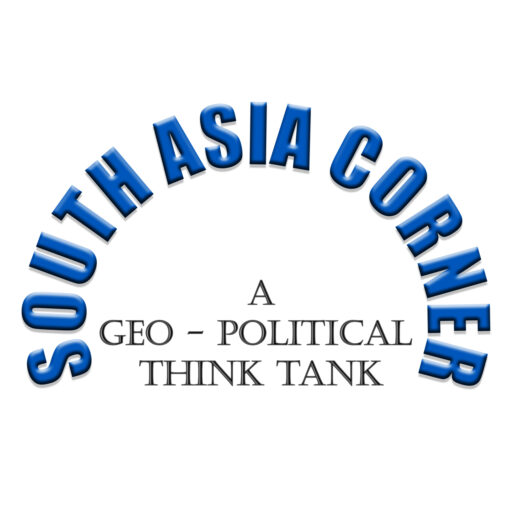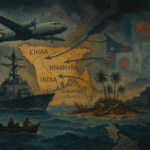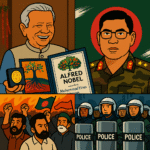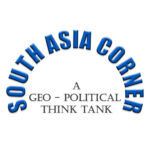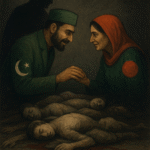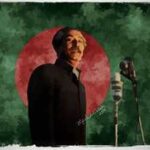The journey of Bangladesh is as complex as it is compelling—a nation of 160 million navigating a landscape marked by turbulent political shifts, ideological twists, and socioeconomic challenges. Since its birth in 1971, Bangladesh has faced numerous obstacles, but the question remains: can this young nation afford the unpredictable ride it’s been on? The journey has included hard-fought independence, betrayal, dictatorship, and cycles of political power plays. While resilience has been a national hallmark, it’s uncertain whether Bangladesh is on a sustainable path or a perpetual roller coaster that risks undermining its future. Let’s dive into the country’s history, from revolution to present-day political dynamics, to analyze this roller coaster of governance.
### 1. **The Birth of Bangladesh: A Quest for Identity and Independence**
Bangladesh’s story begins with a struggle for identity, economic justice, and cultural autonomy. Under British rule, Bengal was a vibrant cultural and economic region. However, India was partitioned in 1947, and Bengal was split into East Pakistan (now Bangladesh) and West Bengal (India). With this division, the people of East Pakistan found themselves governed by West Pakistan, a country with a different linguistic, ethnic, and cultural background.
Despite being the majority, Bengalis were denied fair political representation and economic resources. The language issue in 1952, which saw the deaths of students in Dhaka protesting for Bengali to be recognized as an official language, marked the beginning of a revolutionary spirit. This injustice continued as East Pakistan felt increasingly marginalized economically, with most resources and development initiatives flowing to the western part of the country. However, the Bengali leaders, particularly Sheikh Mujibur Rahman, and the people they represented, showed remarkable resilience, advocating for autonomy and gradually pushing for a full-scale movement toward independence.
### 2. **The Liberation War of 1971: Independence with Unfulfilled Promises**
When the Awami League, led by Sheikh Mujibur Rahman, won a sweeping victory in the 1970 elections, it was a moment filled with hope and expectation. It was expected that East Pakistan would be granted autonomy. However, the West Pakistani regime, unwilling to share power, responded with a brutal crackdown on March 25, 1971. This led to a full-scale war for independence, with horrific violence and human rights abuses.
The birth of Bangladesh on December 16, 1971, came at an enormous cost, with estimates of hundreds of thousands to millions of lives lost. The country was left in ruins but with high hopes for a new beginning. Yet, the expectations quickly turned into disillusionment, as the governance of newly independent Bangladesh proved challenging. Sheikh Mujib faced the Herculean task of rebuilding a war-torn nation with scant resources. The political euphoria soon gave way to economic struggles, administrative dysfunction, and dissatisfaction among the populace. The promises of democracy and progress were overshadowed by new struggles, corruption, and political disarray. However, the sacrifices made during the Liberation War stand as a testament to the nation’s resilience and the respect it commands in the global community.
### 3. **Assassinations, Coups, and Political Betrayals: The Post-Independence Chaos**
The post-independence era for Bangladesh was marred by tragic turns and political betrayal. In 1975, a coup ended in the assassination of Sheikh Mujibur Rahman and most of his family members, shocking the nation and shattering the dreams he had fostered. Bangladesh entered a period of military rule marked by political repression, authoritarianism, and a struggle for control over the narrative of liberation.
General Ziaur Rahman, who came to power in 1977, attempted to bring stability, though his rule was marked by a different set of challenges, including factionalism and rising tensions within the military. While Zia introduced a more market-friendly economy and sought to create a “Bangladeshi” identity distinct from a “Bengali” identity to distance the nation from Indian influence, his policies drew praise and criticism. Despite efforts to consolidate power, Zia, too, fell victim to the cycle of violence, being assassinated in 1981.
These political assassinations and the frequent leadership changes deepened the volatility of Bangladesh’s political culture. The nation witnessed repeated power struggles as successive governments wrestled to hold authority in tension and mistrust.
### 4. **The Military Regime and the Fight for Democracy**
Following Zia’s assassination, another military leader, General Hussain Muhammad Ershad, took control in 1982. Ershad’s rule brought some infrastructure development and economic growth, but it was marred by authoritarian practices, widespread corruption, and civil discontent. Over time, the public and political parties united in opposition, leading to a pro-democracy movement culminating in his resignation in 1990.
The fall of Ershad marked a turning point, and Bangladesh transitioned to a democratic system in 1991. However, the return to democracy didn’t end the roller-coaster politics. Instead, it gave rise to a new era of rivalry between the two major political parties: the Awami League, led by Sheikh Hasina (daughter of Sheikh Mujib), and the Bangladesh Nationalist Party (BNP), led by Khaleda Zia (widow of Ziaur Rahman). This rivalry has since defined Bangladeshi politics, often leading to violent clashes, protests, and general strikes that paralyze the nation.
### 5. **The Tug-of-War Between Awami League and BNP: A Cycle of Political Drama**
The rivalry between the Awami League and BNP has become a central element of Bangladesh’s convoluted political paradigm. This ongoing tug-of-war has created a cycle of instability, where each party, when in power, has sought to diminish the other. Allegations of election rigging, political violence, and corruption have plagued both sides, leaving the country’s democracy in a precarious position.
The two parties have continually traded accusations of authoritarianism, corruption, and collusion with foreign powers while using their time in office to weaken democratic institutions. During the BNP’s rule, allegations of Islamic extremism grew, while the Awami League, in power since 2009, has been accused of undermining judicial independence and stifling press freedom.
### 6. **Democracy in Bangladesh: An Ideal or an Illusion?**
Bangladesh’s political climate raises the question of whether its democratic framework genuinely serves its people. While elections occur, they are often contested, and accusations of fraud undermine public trust. The reality for many is that democracy exists on paper, but democratic institutions and freedoms remain compromised by party loyalty and power struggles.
The 2014 and 2018 elections, particularly, have raised international concerns, with reports of voter intimidation, vote-rigging, and suppression of opposition supporters. This has led critics to argue that Bangladesh’s democracy is an illusion rather than a true representation of the people’s will. Moreover, the current administration has taken controversial measures, such as the Digital Security Act, which restricts freedom of speech, drawing criticism from human rights organizations globally.
### 7. **Economic Growth Amidst Political Instability: A Convoluted Success Story**
Bangladesh has demonstrated remarkable economic growth over the past two decades despite political instability. Its garment industry, a pillar of the economy, has made it one of the world’s largest textile exporters. Bangladesh has achieved a commendable reduction in poverty, healthcare improvements, and literacy rates.
However, the country faces significant challenges diversifying its economy and addressing labour rights, infrastructure, and corruption issues. Much economic progress relies on external factors, including favourable trade agreements and remittances from Bangladeshis abroad. While these economic achievements are impressive, they remain vulnerable to the whims of global markets and internal mismanagement. The question remains whether Bangladesh’s economy can continue to thrive without stable governance.
### 8. **The Rise of Religious Extremism and Social Tensions**
Bangladesh’s political struggles are further complicated by rising religious tensions. Over recent decades, the country has seen sporadic incidents of violence against religious minorities, bloggers, and secular activists. The BNP has faced accusations of tolerating Islamist extremism, while the Awami League, often allied with secularist and progressive forces, has been accused of failing to protect freedom of expression.
While the current government has taken a tough stance on extremism, the underlying issues remain unresolved. Social tensions threaten the cohesion of Bangladesh’s diverse society and raise concerns about the country’s future as a secular state.
### 9. **The Environmental and Socioeconomic Challenges Ahead**
Bangladesh is one of the countries most vulnerable to climate change. Floods, cyclones, and rising sea levels pose existential threats to millions of Bangladeshis, particularly in the coastal regions. This environmental instability further compounds the nation’s socioeconomic challenges, from poverty to urban overpopulation.
The government has tried to address these challenges through climate adaptation programs, but progress could be faster. Bangladesh’s economic and social resilience will depend on its ability to confront these environmental threats effectively.
### 10. **Bangladesh’s Future: On the Brink of Progress or at Risk of Decline?**
Bangladesh’s journey is emblematic of a nation caught between potential and peril. On one hand, the country has demonstrated resilience, economic growth, and significant social progress. On the other, its governance remains marred by a “winner-takes-all” political culture, a lack of institutional integrity, and a vulnerability to external and internal crises.
If Bangladesh can navigate its convoluted political landscape, reinforce democratic institutions, and prioritize the welfare of its citizens, it has the potential to emerge as a regional success story. However, if the political infighting, authoritarian tendencies, and social inequalities persist, the nation risks a future of stagnation.
In conclusion, Bangladesh’s journey from independence to its present-day position has been a story of resilience, struggle, and complexity. Its future remains uncertain. Will Bangladesh harness its strengths to create a stable, prosperous nation, or will it continue to ride this political roller coaster, teetering on
Are we on the edge of crisis and opportunity? Only time will tell. The stakes, however, are high, and with 160 million people counting on a brighter future, the cost of failure could be devastating.
